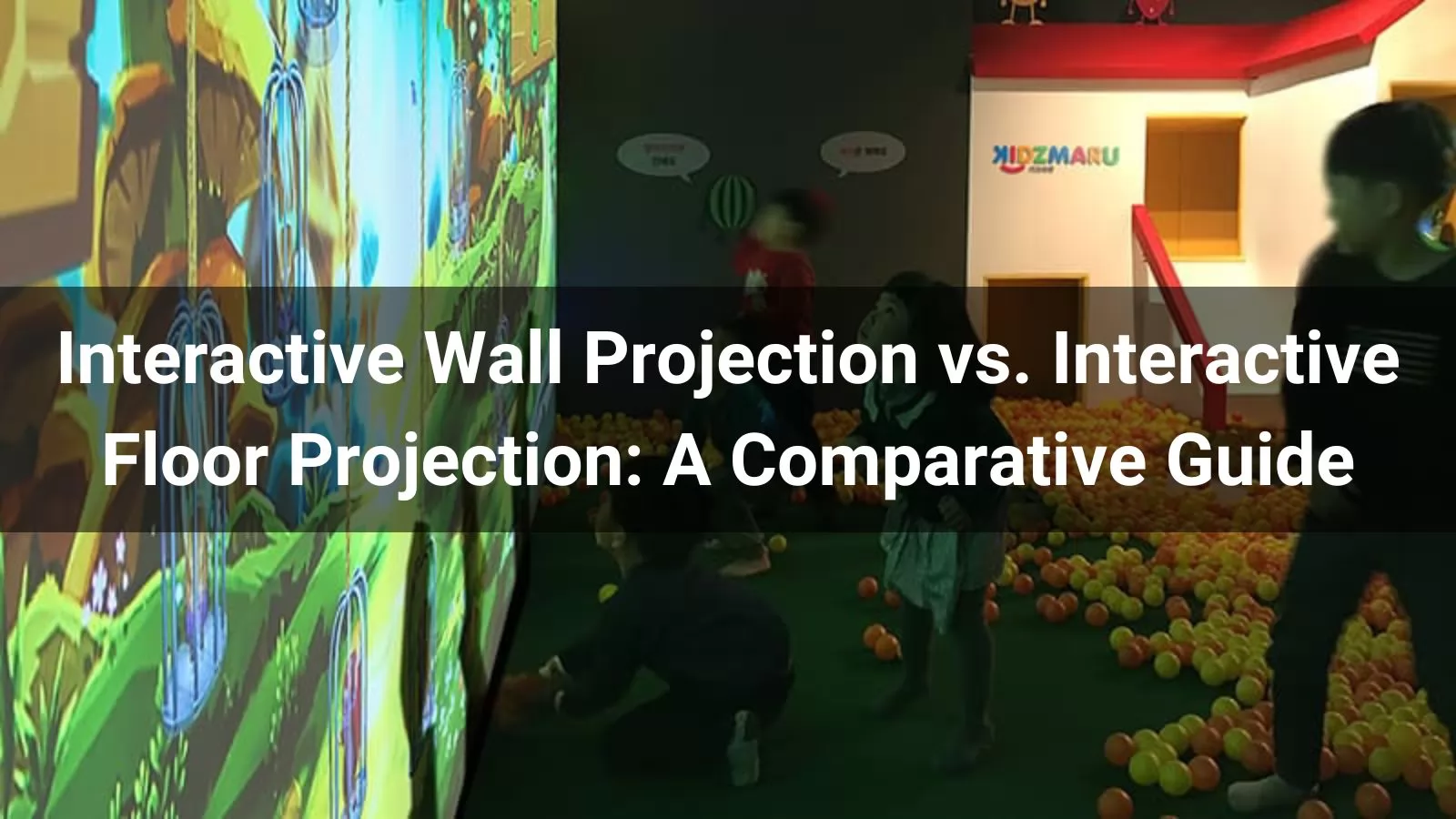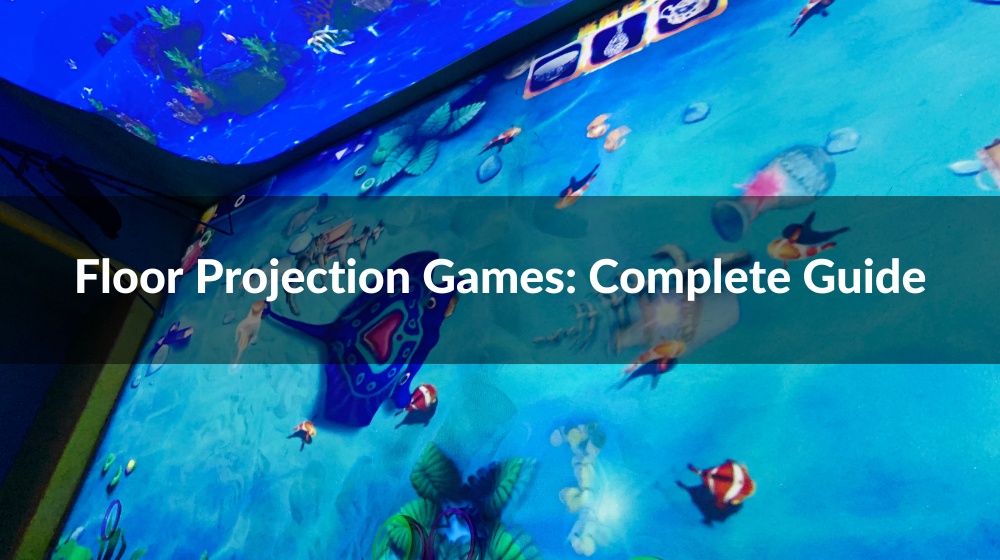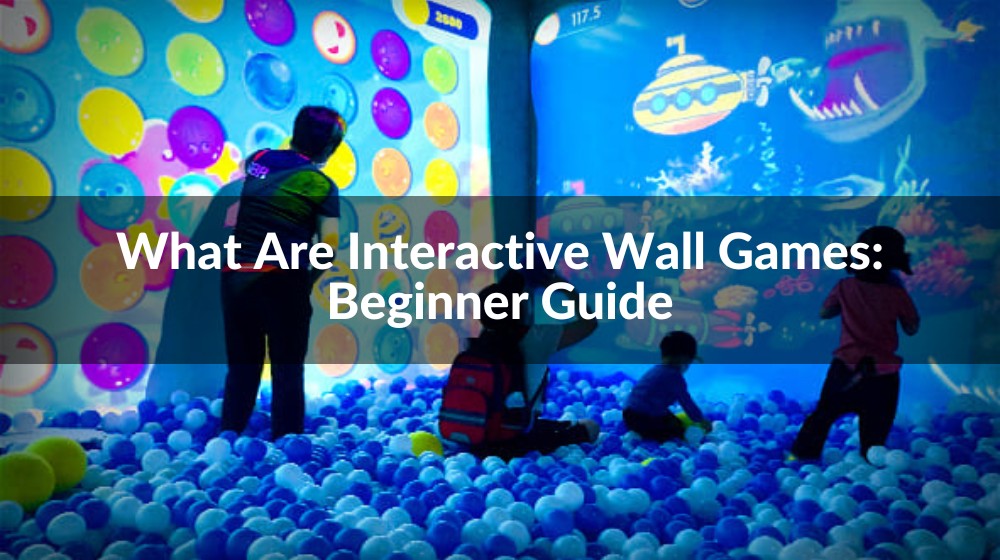Interactive projections are a captivating way to engage users and create immersive experiences. Whether used for marketing, entertainment, or education, both interactive wall projections and interactive floor projections offer unique benefits and applications. This article will compare these two innovative technologies, examining their features, advantages, and ideal use cases.
1. Technology Behind Interactive Projections
Both interactive wall and floor projections rely on advanced projection mapping and sensor technologies to create engaging visual content that reacts to user interaction.
-
Interactive Wall Projection: These systems use projectors to cast images or videos onto vertical surfaces like walls. Sensors track the user’s movements or gestures, enabling them to manipulate the displayed content through touch or motion. Interactive wall projections often rely on infrared sensors or cameras that detect the user’s location and actions, creating dynamic content that changes based on interaction.
-
Interactive Floor Projection: Floor projection systems work similarly, but project content onto horizontal surfaces, such as the ground or floors. Sensors in these systems detect foot movements or gestures and interact with the content displayed on the floor. The technology works with both infrared sensors and motion tracking systems, allowing the projected images to respond in real-time as users move across the floor.
2. User Experience and Interaction
-
Interactive Wall Projection: Wall projections are often more comfortable for users who are standing, making them ideal for environments where the audience needs to view or manipulate content from a distance. Wall projections typically focus on interaction via gestures, touch, or motion, allowing users to control or navigate through displayed visuals with their hands or body movements.
-
Interactive Floor Projection: Floor projections offer a more immersive experience by encouraging users to physically engage with the projected content through movement, such as stepping, jumping, or walking. This type of projection is particularly effective in spaces like museums, amusement parks, and educational environments, where users can physically interact with the content as part of a game or learning experience.
3. Ideal Use Cases
Interactive Wall Projection
Advantages:
Interactive wall projections offer a large viewing area, making them ideal for group interactions. These systems are particularly effective when the content needs to be visible from a distance, allowing people to interact with the projected visuals from various angles. Wall projections are also versatile, supporting both individual and group interactions, which makes them suitable for a range of applications, from retail environments to exhibitions and presentations.
Limitations:
However, interactive wall projections may require significant setup space and ceiling mounting for the projectors and sensors. This can make installation more complex, especially in environments with limited overhead space. Additionally, the interactivity of wall projections is often limited by the user’s reach or height, which can restrict the types of interactions that are possible, especially in large or high-ceilinged rooms.
Interactive Floor Projection
Advantages:
Interactive floor projections are highly engaging because they encourage users to physically interact with the content. This makes them particularly effective for environments that promote active participation, such as children's areas, events, or public spaces. Floor projections also have the ability to cover a large area with dynamic content, providing an immersive experience. They are especially popular in interactive sports like indoor interactive basketball projections, go-karting, and interactive football, where users can physically engage with the projected visuals in real time.
Limitations:
Floor projections, however, require careful consideration of the floor’s condition and surface type to ensure smooth operation. They also need to account for durability and cleanliness, particularly in high-traffic areas. Moreover, because the interaction is limited to the ground, some types of content may not be as effective, especially if they require engagement from various heights or angles. This can restrict the types of activities or games that can be projected effectively on the floor.
4. Space and Installation Requirements
-
Interactive Wall Projection: Wall projections require adequate wall space for the projection, and the installation of projectors and sensors on or near the ceiling. The distance from the projector to the wall, as well as ambient lighting conditions, must be taken into account for the best visual quality. Wall projections generally work best in larger or indoor spaces where walls are readily available.
-
Interactive Floor Projection: Floor projections require more consideration of the floor’s surface type, durability, and cleanliness. Depending on the location, floor projections might need protective covers for the projectors or sensors to prevent damage. These setups may be more space-consuming, especially if the floor needs to be entirely covered with interactive content. For example, interactive tennis or interactive projector games often require ample floor area to maximize the impact of the experience.
5. Advantages and Limitations
-
Interactive Wall Projection:
-
Advantages:
- Large viewing area for group interactions.
- Better for content that requires visibility from a distance.
- More versatile for both individual and group interactions.
-
Limitations:
- May require more setup space and ceiling mounting.
- Limited interactivity based on user reach or height.
-
Advantages:
-
Interactive Floor Projection:
-
Advantages:
- Encourages physical interaction, making it highly engaging.
- Ideal for children, events, or public spaces.
- Can cover a larger area with engaging, dynamic content.
- Perfect for interactive sports like indoor interactive basketball projections, go-karting, and interactive football.
-
Limitations:
- Requires careful consideration of floor conditions.
- Interaction is limited to the ground, which may not be ideal for certain types of content.
-
Advantages:
Conclusion
Both interactive wall projections and interactive floor projections offer exciting ways to engage users with dynamic, visually immersive content. The choice between the two largely depends on your specific needs, space, and intended audience. Wall projections are ideal for more traditional or professional environments, while floor projections shine in interactive, playful settings that encourage physical movement. Whether you're looking to enhance a retail space, create an educational experience, or entertain visitors with activities like interactive go-karting, interactive archery, or interactive bumper cars, both types of interactive projections provide unique opportunities for engagement and creativity.Gooest Tech, a leading Chinese supplier, offers high-quality interactive projector systems that are perfect for creating these dynamic gaming experiences. Their innovative solutions and excellent customer service make them a great choice for anyone looking to elevate their entertainment offerings. Contact us now!



.png)















